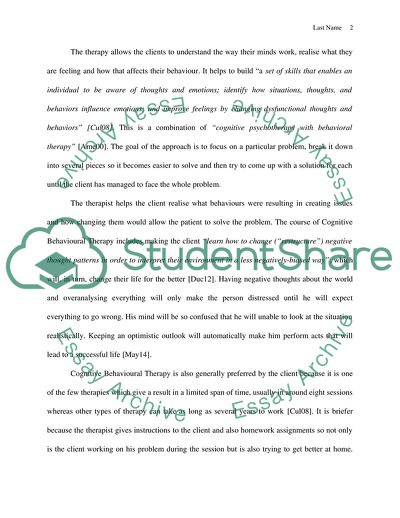Cite this document
(Treating Depression by using Cognitive Behavioural Therapy Coursework Example | Topics and Well Written Essays - 2250 words, n.d.)
Treating Depression by using Cognitive Behavioural Therapy Coursework Example | Topics and Well Written Essays - 2250 words. https://studentshare.org/psychology/1818734-clinical-and-health-psychology
Treating Depression by using Cognitive Behavioural Therapy Coursework Example | Topics and Well Written Essays - 2250 words. https://studentshare.org/psychology/1818734-clinical-and-health-psychology
(Treating Depression by Using Cognitive Behavioural Therapy Coursework Example | Topics and Well Written Essays - 2250 Words)
Treating Depression by Using Cognitive Behavioural Therapy Coursework Example | Topics and Well Written Essays - 2250 Words. https://studentshare.org/psychology/1818734-clinical-and-health-psychology.
Treating Depression by Using Cognitive Behavioural Therapy Coursework Example | Topics and Well Written Essays - 2250 Words. https://studentshare.org/psychology/1818734-clinical-and-health-psychology.
“Treating Depression by Using Cognitive Behavioural Therapy Coursework Example | Topics and Well Written Essays - 2250 Words”. https://studentshare.org/psychology/1818734-clinical-and-health-psychology.


